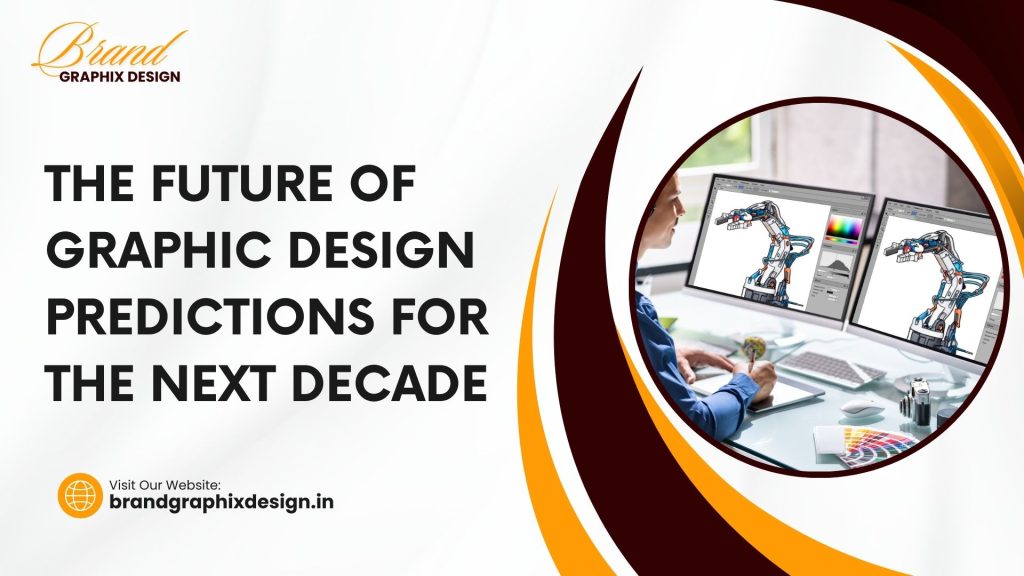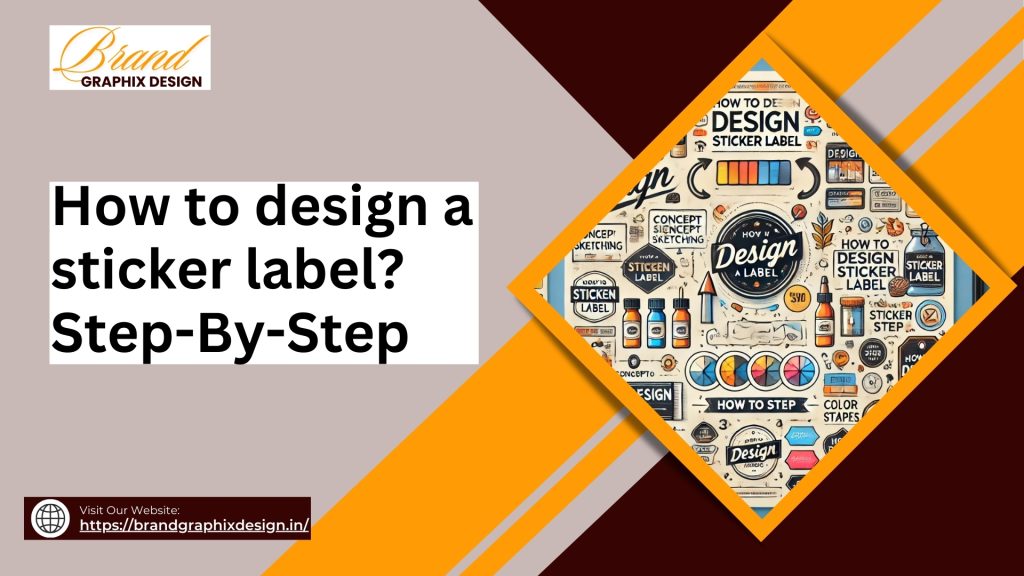Graphic design has always been a dynamic field, constantly evolving with new technologies and trends. Over the past decade, we’ve seen significant changes in design styles, tools, and techniques. As we look ahead to the future, it’s clear that graphic design will continue to transform, driven by advancements in technology and changing consumer preferences. In this blog, we’ll explore some predictions for the future of graphic design over the next decade, highlighting key trends and innovations that are likely to shape the industry.
1. Artificial Intelligence in Design
Artificial Intelligence (AI) is already making waves in various industries, and graphic design is no exception. AI-powered tools are becoming increasingly popular, helping designers automate repetitive tasks, generate design ideas, and even create complete designs from scratch. In the future, AI is expected to play an even bigger role in graphic design, offering personalized design solutions, optimizing workflows, and enhancing creativity. While AI won’t replace human designers, it will certainly augment their capabilities, allowing them to focus on more complex and creative aspects of design.
- AI-powered tools will assist in automating design tasks.
- Personalized design solutions will become more common.
- AI will enhance creativity by providing new design ideas and possibilities.
2. The Rise of Augmented Reality (AR) and Virtual Reality (VR)
Augmented Reality (AR) and Virtual Reality (VR) are transforming the way we experience and interact with digital content. In the next decade, these technologies are expected to have a significant impact on graphic design. Designers will need to create immersive and interactive experiences that blend the physical and digital worlds. From AR-enabled packaging to VR-based virtual showrooms, the possibilities are endless. As these technologies become more mainstream, designers will need to adapt their skills to create engaging and realistic virtual environments.
- AR and VR will create new opportunities for immersive design.
- Designers will need to learn new skills to work with these technologies.
- Interactive and realistic virtual environments will become more common.
3. Sustainability in Design
As environmental concerns continue to grow, sustainability will become a central focus in graphic design. Consumers are increasingly looking for brands that prioritize sustainability, and this trend will only intensify in the coming years. Designers will need to consider the environmental impact of their work, from the materials used in packaging to the energy consumed by digital designs. Sustainable design practices, such as using eco-friendly materials, reducing waste, and creating designs that can be easily recycled, will become standard in the industry.
- Sustainable design will become a priority for brands and designers.
- Eco-friendly materials and practices will be widely adopted.
- Designs will focus on reducing waste and promoting recyclability.
4. The Integration of 3D Design
3D design is becoming more accessible and is already being used in various applications, from product design to animation. In the future, 3D design will become an integral part of graphic design, allowing designers to create more realistic and dynamic visuals. With advancements in 3D software and tools, even designers without a background in 3D modeling will be able to incorporate 3D elements into their work. This trend will lead to more engaging and visually stunning designs, particularly in advertising, gaming, and digital marketing.
- 3D design will become more integrated into graphic design workflows.
- Advancements in 3D tools will make the technology accessible to more designers.
- 3D elements will be widely used in advertising, gaming, and marketing.
5. Personalization and Customization
Personalization is a growing trend across various industries, and graphic design is no different. In the future, consumers will expect more personalized and customized experiences, and designers will need to deliver. This could involve creating designs that adapt to individual preferences, using data-driven insights to tailor content, or offering customizable products. Personalization will become a key differentiator for brands, allowing them to connect with their audience on a deeper level and stand out in a crowded market.
- Personalization will become a key trend in graphic design.
- Designs will be tailored to individual preferences and needs.
- Customizable products and experiences will become more popular.
6. The Continued Growth of Motion Design
Motion design has been gaining popularity in recent years, and this trend is set to continue in the future. With the rise of video content and the increasing demand for dynamic visuals, motion design will play a crucial role in graphic design. From animated logos to interactive web elements, motion design adds a layer of depth and engagement that static designs can’t achieve. Designers will need to develop skills in animation and motion graphics to stay competitive in the evolving design landscape.
- Motion design will become increasingly important in graphic design.
- Animated logos and interactive elements will become more common.
- Designers will need to develop animation and motion graphics skills.
7. The Influence of Minimalism
Minimalism has been a dominant trend in design for several years, and it shows no signs of slowing down. In the future, minimalist design will continue to be popular, with an emphasis on simplicity, clarity, and functionality. This approach will be especially important as consumers become more selective about the content they engage with. Minimalist design allows for easy navigation, quick comprehension, and a focus on the essentials, making it an effective strategy in both digital and print media.
- Minimalism will continue to be a key trend in design.
- Simplicity, clarity, and functionality will be prioritized.
- Minimalist design will be effective in both digital and print media.
8. The Emergence of Inclusive Design
Inclusive design is about creating content that is accessible and usable by as many people as possible, regardless of their abilities or disabilities. As awareness of diversity and inclusion grows, inclusive design will become a crucial consideration for graphic designers. This will involve designing for accessibility, such as using high-contrast colors, readable fonts, and alternative text for images. Inclusive design not only ensures that everyone can enjoy your content but also reflects positively on your brand’s values and commitment to equality.
- Inclusive design will become a key consideration for designers.
- Designs will focus on accessibility and usability for all users.
- Inclusive design will enhance brand reputation and social responsibility.
9. The Impact of Remote Work on Design Collaboration
The shift to remote work has changed the way designers collaborate and communicate. In the future, remote work will continue to influence the design industry, leading to more digital collaboration tools and platforms. Designers will need to adapt to working in distributed teams, using cloud-based tools for sharing ideas, providing feedback, and managing projects. This trend will also open up opportunities for global collaboration, allowing designers from different parts of the world to work together on projects.
- Remote work will continue to impact design collaboration.
- Digital tools and platforms will facilitate remote collaboration.
- Global collaboration will become more common in the design industry.
10. The Evolution of Branding and Visual Identity
As the digital landscape evolves, so too will branding and visual identity. In the future, brands will need to be more adaptable and responsive to changing consumer expectations. This will involve creating flexible and dynamic visual identities that can be easily updated and adapted across different platforms. Brands will also need to focus on building authentic and transparent identities, using design to communicate their values and connect with their audience on a deeper level.
- Branding will become more adaptable and responsive to change.
- Flexible and dynamic visual identities will be crucial for success.
- Design will play a key role in building authentic brand identities.
Stay Ahead with Future-Ready Graphic Design
The future of graphic design promises exciting advancements and opportunities. By staying informed about emerging trends and embracing new technologies, you can ensure your designs remain relevant and impactful. If you need help adapting to the future of graphic design, we’re here to assist. Contact us today at +91 91189 11171 to start creating designs that are ready for the next decade and beyond.



